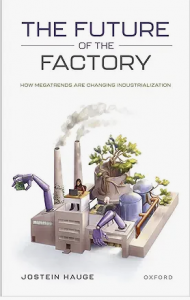Colleen Dunlavy’s Small, Medium, Large is an interesting and thought provoking read – and relevant to today’s debate on industrial policy. It’s a relatively short book, a history of the emergence of standards in US goods in the 1910s and 1920s. For example, in 1918-21 there were 78 different mattress sizes on the market and in 1922 the industry agreed to bring this down to 4 standard sizes, the ones we still use in the US and UK (apart from Ikea’s!). I write ’emergence’ but the book tells the fascinating history of the way industry agreements were brokered by the US government. During the years of US participation on World War 1 this was for reasons of prioritising production capacity and materials for the war effort. In the 1920s and beyond it continued at the behest of Herbert Hoover as Commerce Secretary in a drive to improve the productivity of US manufacturing. This took places under the auspices of a division ofhte Department with the wonderful name of Division of Simplified Practice (‘Simplified Practice’ sounded less socialist than ‘standardisation’.) Making multiple models in short production runs meant US firms could not capture economies of scale. Meanwhile in the UK and Germany separate standardisation drives were under way.
Of course, this meant not giving customers what they had wanted in terms of variety and choice – it was the Henry Ford approach of any colour you like as long as it’s black. A Ford executive is quoted as saying, “We standardized the customers.” Officials railed against the “excessive mulitiplicity of styles” as wasteful. The customers got mass production and lower prices in return, but they were kept out of the government-organisaed co-ordination between producers. Of course, another word for this might be ‘collusion’ and the book notes the obvious tension with anti-trust policy. By definition, if competition occurs over price rather than variety or attributes, this kills small producers.
Anyway, the history was new to me, and the book set me thinking about the role of standards. There has been a proliferation of variety and personalisation of goods because the technological possibilities have made this cheap enough to do without losing the benefits of flexible and rapid manufacturing. Yet as the well-known Marc Levinson book The Box pointed out, some standards have transformative productivity effects – the GSM mobile phone standard would be another example. This seems a highly relevant question now as we continue the ‘war on carbon’ – when is avoiding waste a good rationale for enforced co-operation over technical standards? At what level of the production or technology stack should governments want standardisation – requiring collaboration – so as to enable competition and variety at higher levels – for example in generative AI now? The dimensions along which firms compete are to some extent a social choice variable.


